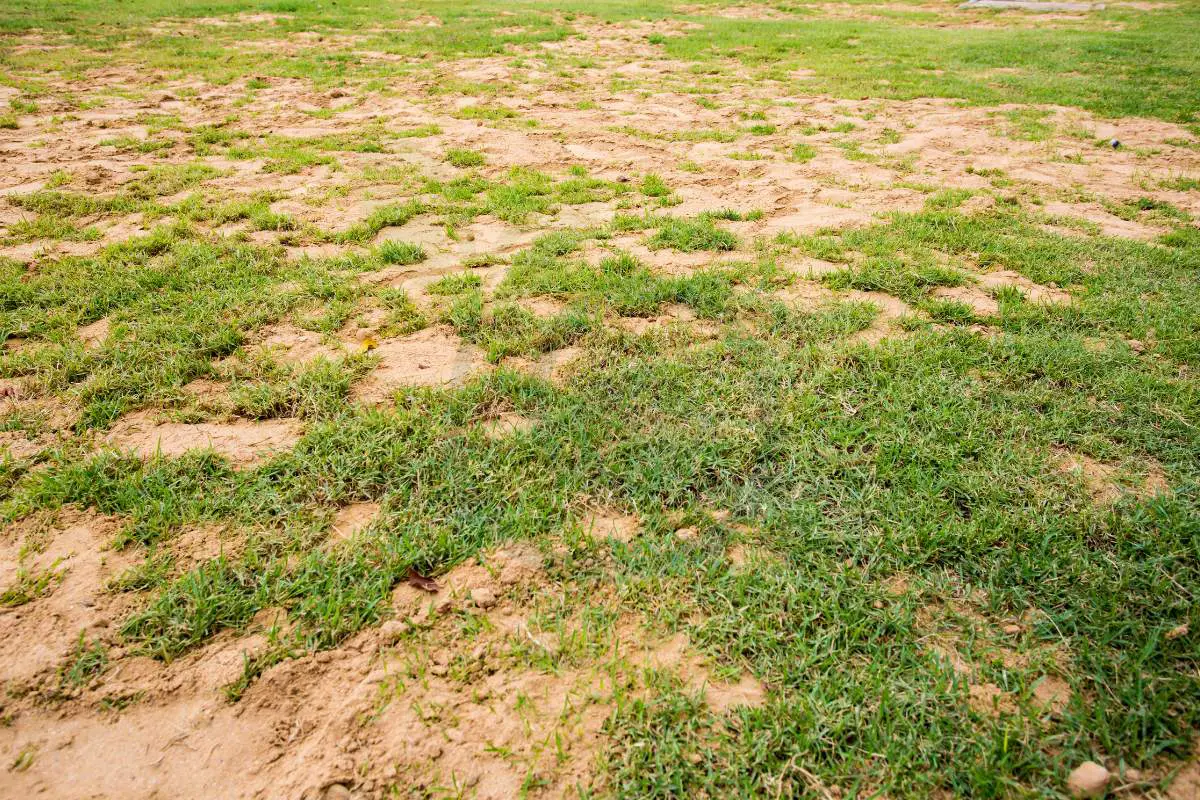Planting grass seed in sandy soil can be challenging due to its fast-draining nature, requiring specific techniques for successful growth. However, with the right approach, you can transform your sandy terrain into a lush green lawn that thrives. By understanding the unique characteristics of sandy soil and implementing tailored strategies, you can achieve a vibrant and healthy grass cover that withstands the sandy conditions.
Exploring the best practices for planting grass seed in sandy soil will help you navigate the contrast between traditional soil types and this particular challenge. From selecting suitable grass varieties to optimizing watering schedules, each step plays a crucial role in fostering robust growth in sandy environments. Embrace these insights to conquer the hurdles posed by sandy soil and cultivate a flourishing lawn of turf grass that defies expectations.
Key Takeaways
- Choose grass types like Bermuda or Zoysia that thrive in sandy soil for better growth.
- Prepare the soil by incorporating organic matter and nutrients to improve its quality before seeding.
- Optimal seeding time for sandy soil is in early spring or early fall to take advantage of milder temperatures.
- Use techniques like slit seeding or hydroseeding for effective seed application in sandy soil.
- Ensure consistent watering to keep the soil moist but not waterlogged for successful germination.
- Regularly monitor the grass seedlings for growth progress and address any issues promptly.
Sandy Soil Characteristics
Water Drainage
Proper water drainage is crucial in sandy soil to prevent waterlogging and ensure healthy plant growth. Sandy soil, with its large particles, allows water to pass through quickly. To improve drainage, consider incorporating organic matter like compost into the soil. Raised beds can also aid in enhancing water drainage in clay soil by elevating the planting area.
Nutrient Retention
Addressing nutrient retention challenges in sandy soil is essential for supporting plant growth. Sandy soil tends to have poor nutrient-holding capacity due to its loose texture. Enhance the soil's nutrient retention by adding organic matter, such as well-rotted manure or compost. Opt for slow-release fertilizers that gradually provide nutrients to plants over time, promoting better nutrient availability.
Grass Growth Impact
Understanding how sandy soil affects grass growth is key when planting grass seeds. Certain grass varieties are better suited for sandy soil conditions due to their adaptability to low-nutrient environments. Choose grass species like Bermuda grass or Zoysia grass that can thrive in sandy soil and withstand its challenges. Implementing proper care practices, such as regular watering and fertilizing, will further support optimal grass growth in sandy soil.
Selecting Grass Types
Drought-Tolerant Varieties
When selecting grass seed, prioritize varieties known for drought tolerance to thrive in sandy soil. Opt for warm-season grasses as they exhibit better resilience during dry periods. Consider planting fine fescue or buffalo grass, renowned for their ability to withstand drought conditions.
Fast-Growing Species
For sandy soil, focus on fast-growing grass species to establish a lush lawn quickly. Explore options like Bermuda grass or annual ryegrass, known for their rapid growth rates. Consider overseeding with fast-growing species to achieve swift coverage across the area.
Shade Tolerance
When dealing with sandy soil, it's essential to assess the shade tolerance of different grass species. Opt for varieties such as fine fescue or St. Augustine grass that can thrive even in shaded areas. Remember to ensure these shade-tolerant varieties receive adequate sunlight for optimal growth and development.
Soil Preparation Steps
Testing Soil pH
Test soil pH to assess acidity levels in sandy soil, crucial for optimal grass seed growth. Adjust pH levels using lime to raise or sulfur to lower if necessary.
Organic Matter Addition
Enhance sandy soil quality by incorporating organic matter like compost or peat moss. This addition improves soil structure and boosts fertility.
Leveling and Aeration
Ensure even distribution of grass seeds by leveling the soil surface properly. Improve air circulation and water penetration in sandy soil through aeration. Firm the soil post-leveling using a lawn roller.
Ideal Seeding Time
Seasonal Considerations
When planting grass seed in sandy soil, it's crucial to consider seasonal variations for successful growth. Optimal seeding time differs based on the type of grass you're planting. For warm-season grasses, late spring is the best time to plant them. This timing allows the seeds to germinate and establish before the intense summer heat sets in. On the other hand, fall is ideal for cool-season grass seed establishment in sandy soil. Planting during this season takes advantage of cooler temperatures and abundant moisture, promoting healthy growth.
Temperature Impact
Temperature plays a significant role in the germination of grass seed in sandy soil. It's essential to understand how temperature affects the growth process. To ensure successful establishment, plant your grass seed when soil temperatures are conducive for germination. Monitoring temperature fluctuations is key to determining the best time to sow your seeds. Extreme temperatures can hinder germination and overall growth, so it's vital to plant during optimal conditions.
Seed Application Techniques
Even Distribution
To ensure successful grass growth in sandy soil, even distribution of the seed is crucial. Using a seed spreader helps achieve uniform coverage, preventing sparse areas. Overlapping seeding passes effectively reduces the chances of bare patches.
Seeding on Slopes
Slope Stabilization
Addressing slope stabilization challenges on sandy terrain is essential for optimal grass growth. Implementing erosion control measures is vital to prevent soil erosion on sloped areas. Utilizing erosion control blankets can effectively minimize soil movement, promoting seed germination.
Watering Techniques
Proper watering techniques play a significant role in nurturing grass seeds in sandy soil. It's essential to water deeply but infrequently to encourage deep root growth. Consider installing drip irrigation systems for efficient water delivery, ensuring consistent moisture levels for optimal germination.
Watering and Care
Initial Watering
Adequately moisten the soil during the initial watering phase to support seed germination. Keep the soil consistently moist without overwatering to prevent drowning the seeds. Water the sandy soil multiple times a day to ensure it stays hydrated and promotes growth.
Maintenance Schedule
Establish a routine maintenance schedule for your grass planted in sandy soil to keep it healthy. Regularly mow the grass to maintain an optimal height that fosters strong root development. Monitor the soil moisture levels closely and adjust the watering frequency accordingly to avoid under or overwatering.
Fertilization Timing
Determine the ideal timing for fertilizing sandy soil to nourish your grass effectively. Apply fertilizer after the grass seed has germinated to provide essential nutrients for growth. Follow the recommended fertilization rates carefully to prevent nutrient imbalances that can harm your grass.
Monitoring Growth
Germination Timeline
Grass seed planted in sandy soil typically follows a specific germination timeline. Keep track of the days it takes for the seeds to sprout. Watch for the first signs of green shoots breaking through the soil. Patience is key, as germination times can vary depending on factors like temperature and moisture levels.
Monitoring the emergence of seedlings is crucial to ensure they are growing at a healthy pace. Observe their progress daily to catch any issues early on. As the grass seedlings start to grow, note any areas where growth seems sparse or uneven. This will help you adjust your care routine accordingly.
Thinning Out Process
Dealing with overgrowth of grass seed in sandy soil is common during the initial stages. When too many seedlings sprout closely together, it can lead to overcrowding and hinder proper growth. To address this, thin out the excess seedlings carefully by gently pulling out the weaker ones. This process allows more space for the healthier plants to thrive.
Promoting healthy growth involves spacing out the grass plants appropriately. By thinning out the excess seedlings, you create room for each plant to develop robust roots and foliage. This prevents competition for nutrients and sunlight, ensuring that each grass plant has ample resources to grow strong and lush.
Common Challenges
Weed Competition
Managing weed competition in sandy soil is crucial during grass seed establishment. Utilize pre-emergent herbicides to prevent weed growth effectively. Handpick weeds regularly to ensure a weed-free lawn.
Pest Intrusion
Stay vigilant against pests that can harm grass seed in sandy soil. Regularly monitor for signs of pest damage and take immediate action when detected. Employ natural pest control methods to safeguard the health of grass plants.
Lawn Maintenance Tips
Mowing Guidelines
When planting grass seed in sandy soil, it's crucial to adhere to specific mowing guidelines. Adjust the mower height according to the grass species and growth stage for optimal results. By avoiding cutting the grass too short, you can encourage healthy root development.
Seasonal Care
For a thriving lawn in sandy soil, it's essential to implement seasonal care practices. Tailor your watering and maintenance routines based on seasonal changes to support the grass's growth. Make sure to prepare the grass adequately for winter dormancy to ensure robust spring regrowth.
Final Remarks
By understanding sandy soil characteristics, selecting the right grass types, and following proper soil preparation and seeding techniques, you can successfully grow a lush lawn in sandy soil. Remember to monitor growth, address common challenges promptly, and implement proper lawn maintenance practices to ensure your grass thrives. With consistent care and attention, your lawn will transform into a vibrant and healthy outdoor space for you to enjoy.
Now that you have the knowledge and tools to plant grass seed in sandy soil effectively, it's time to put these insights into action. Take the first step today by applying these tips to your lawn care routine and watch as your sandy soil transforms into a green oasis. Your efforts will be rewarded with a beautiful and resilient lawn that enhances the beauty of your outdoor environment.
Frequently Asked Questions
How does sandy soil affect grass seed planting?
Sandy soil drains quickly, leading to poor water retention and nutrient deficiency. Grass seeds may struggle to establish roots in sandy soil, requiring more frequent watering and fertilization for successful growth.
What are the best grass types for sandy soil?
Grasses like Bermuda, Zoysia, and Buffalo are well-suited for sandy soil conditions. These varieties have deep root systems that can thrive in low-nutrient environments, making them ideal choices for planting in sandy soil.
When is the ideal time to plant grass seed in sandy soil?
Early fall or spring is the best time to plant grass seed in sandy soil. The cooler temperatures and increased moisture during these seasons promote seed germination and establishment, giving your grass a better chance of thriving.
How should I water newly planted grass seeds in sandy soil?
Water newly planted grass seeds lightly but frequently to keep the topsoil moist. Avoid overwatering, as this can lead to seed washout or rotting. A gentle misting twice a day is generally sufficient to support seed germination without causing waterlogging.
What are common challenges when planting grass seed in sandy soil?
Common challenges include rapid moisture loss, nutrient leaching, and poor seed-to-soil contact due to sand's loose texture. Address these challenges by using organic matter amendments, regular watering schedules, and suitable grass varieties for optimal growth results.
Image Source: Paid image from CANVA



